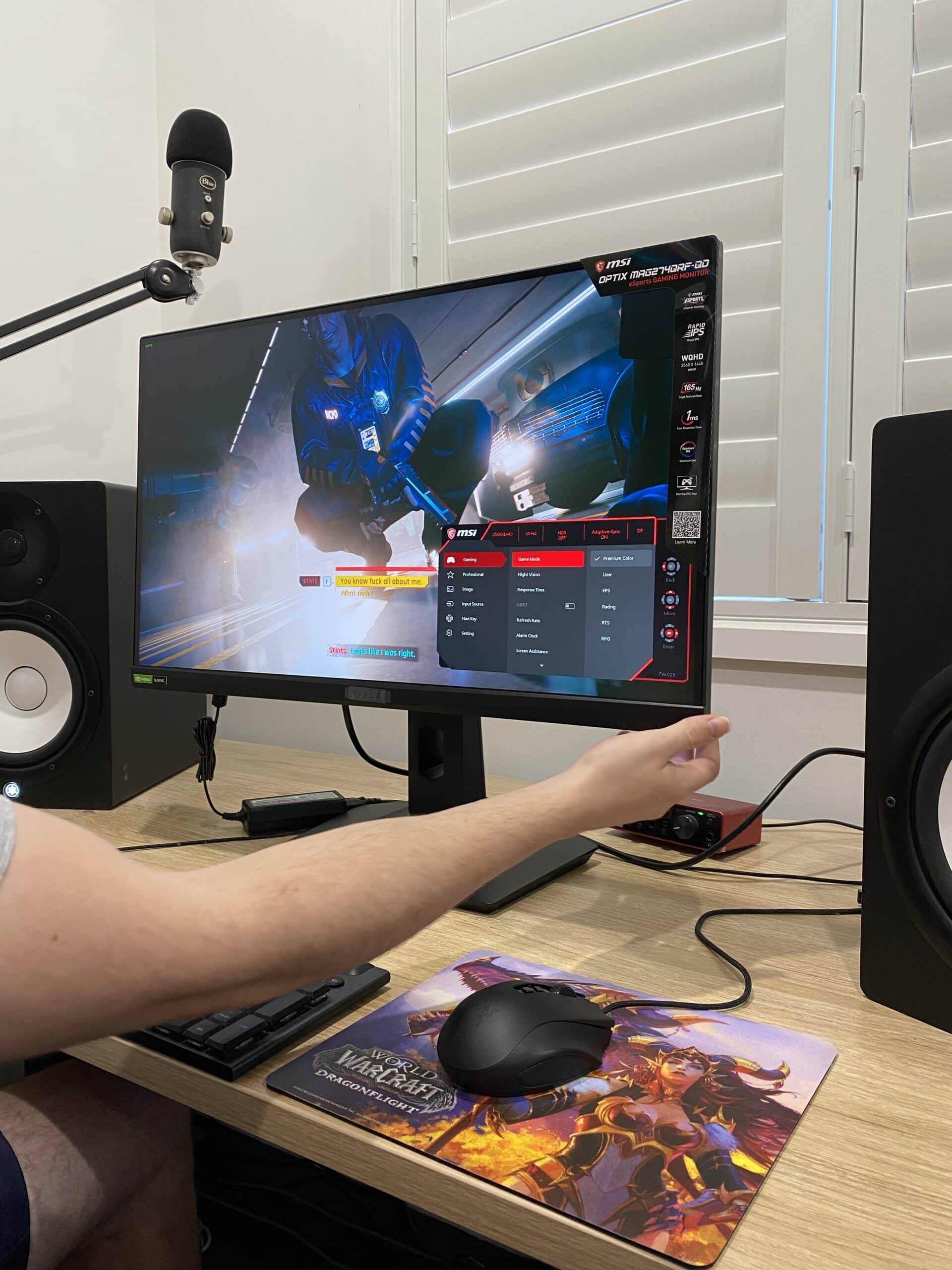Outside of your PC build, your monitor is essential for maximizing your performance in FPS games. A monitor with a high refresh rate and response time helps improve clarity and accuracy while playing, allowing you to track targets accurately and react faster than opponents.
When I first decided to research the available models on the market, I contacted our friends at MSI to ask for advice. With their long history of Esports, it seemed only fitting to consult the experts. MSI did one better than their advice and sent out some of their best-selling gaming monitors to test run the Optix MAG274QRF-QD and the MAG321QR-QD.
If you’re serious about taking your FPS streaming to the next level, I highly recommend checking out the MSI Streamer Hub. It’s a centralized platform that offers various resources, tips, and tools specifically designed for streamers.

The MAG274QRF-QD is a 27-inch beast with QHD resolution and a refresh rate of up to 165Hz, competing with the ASUS TUF Gaming VG27AQ, Dell S2721DGF, and ViewSonic Elite XG270QG.
If you want something bigger, the MAG321QR-QD is a 32-inch monster with QHD resolution and a refresh of 165Hz that can reach 170Hz by DP overclocking, competing with the LG 32GK850F-B and Acer Predator XB321HK.
Having only ever used a 24″ monitor for gaming, I was initially skeptical of a 32″ screen larger than my childhood tv, but I was quickly converted. Booting up Call of Duty felt like a completely different experience. Not only did the refresh rate of 170hz in the MAG321QR-QD make tracking targets smooth, but spotting enemies off in the distance was much easier, even if my aim was still horrendous.
While adjusting to using the mouse on a larger screen took a bit of time, it became easier. Regardless of what brand you purchase, as a first step, I’d recommend checking out a local retail store with a display to see which size screen suits your preference.
Unboxing Experience
The unboxing experience was impressive. The first thing I noticed about the Optix MAG274QRF-QD is that it swivels and can be used for vertical display. To touch the screen feels incredibly sturdy and offers a great range of motion. The stand has a wide range of height adjustments, allowing you to customize your monitor to whatever setting works best for you. Additionally, the stand base has a decent weight, so it won’t shift while you tilt the screen or adjust the height.
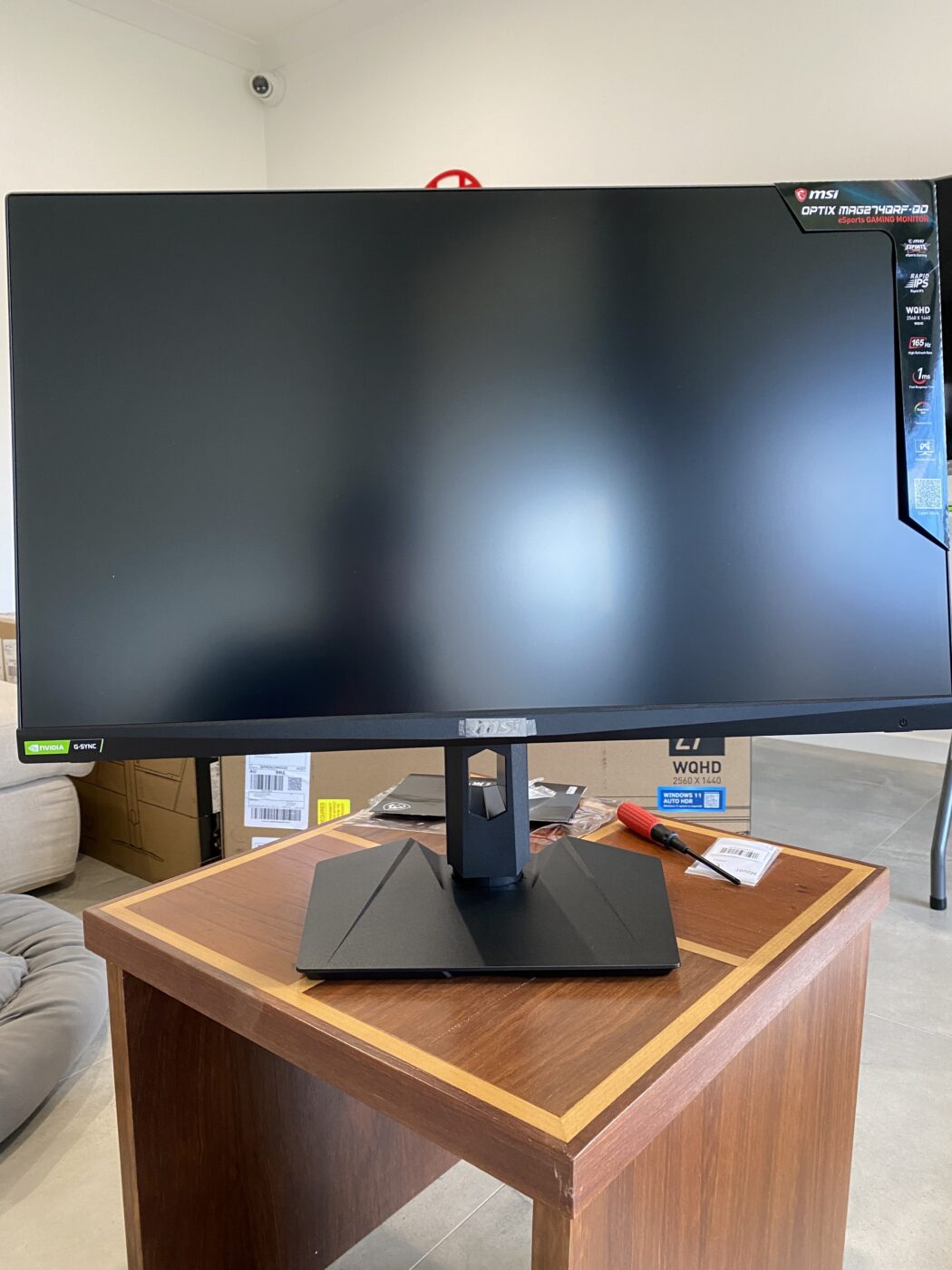
My first impression of the MAG321QR-QD was just the screen’s sheer size. Compared to my 24″ monitor, it felt gigantic.
After pulling out both monitors, I found myself in quite a predicament; due to the size of both monitors, there was no way they would fit on my desk. After some creative rearranging and hard choices, I mounted the MAG321QR-QD on my wall using an old tv bracket I had spare.
As for the aesthetics, both models are mostly matte black plastic with a few flourishes on the rear and some RGB lighting.
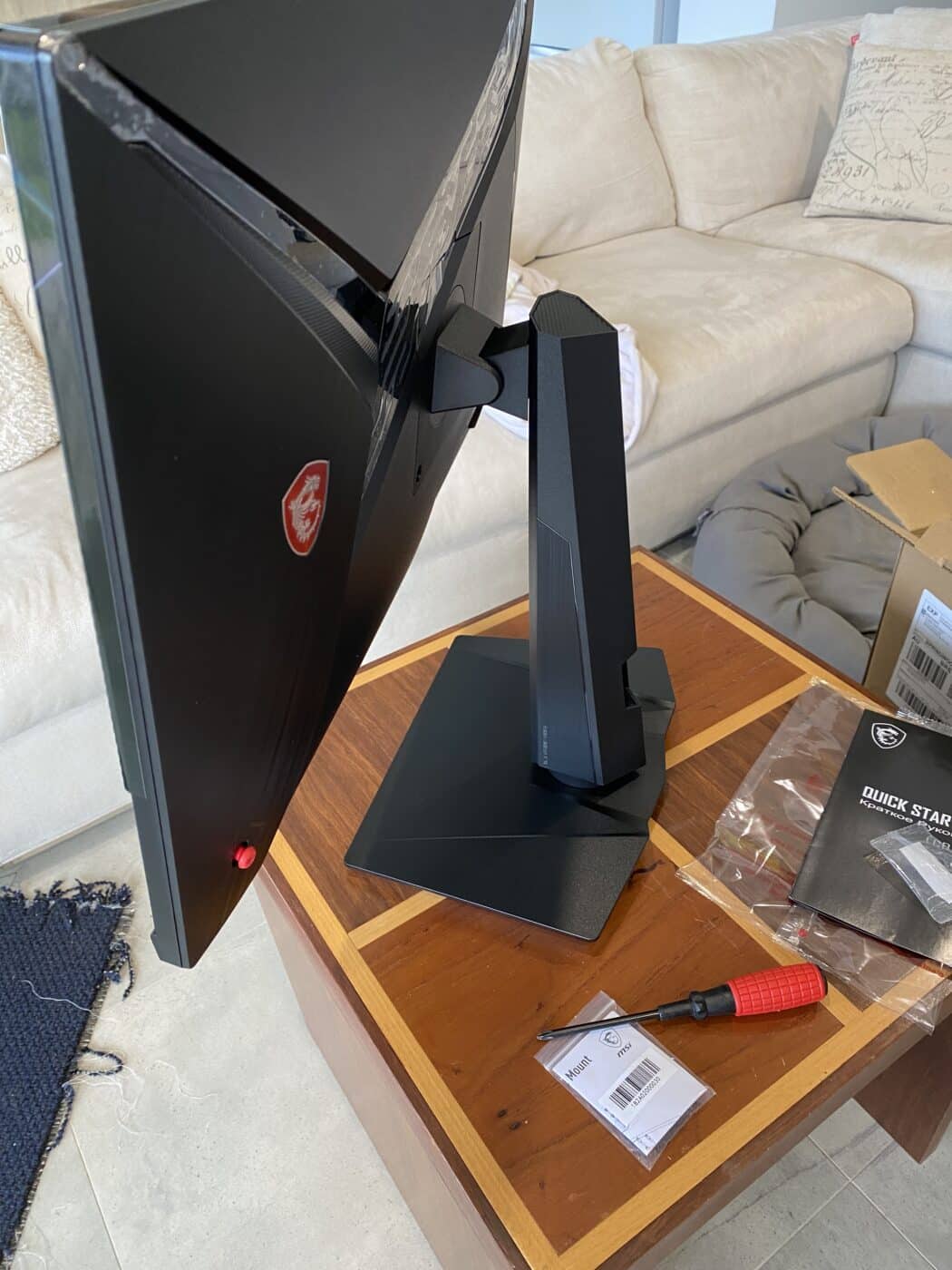
General Performance
In terms of benchmarking, both monitors performed well. The refresh rate and response time were exactly as advertised, with no noticeable ghosting or other discrepancies. Most importantly, the colors are vibrant and accurate without blurring or smudging. Both monitors feature NVIDIA G-SYNC technology, synchronizing the display’s refresh rate with the graphics card’s output to eliminate screen tearing and stuttering.
This results in a smoother and more immersive gaming experience, which is particularly important for FPS games, where every millisecond counts. The next level with Quantum Dot technology also provides a wider color gamut and greater accuracy compared to traditional IPS panels.
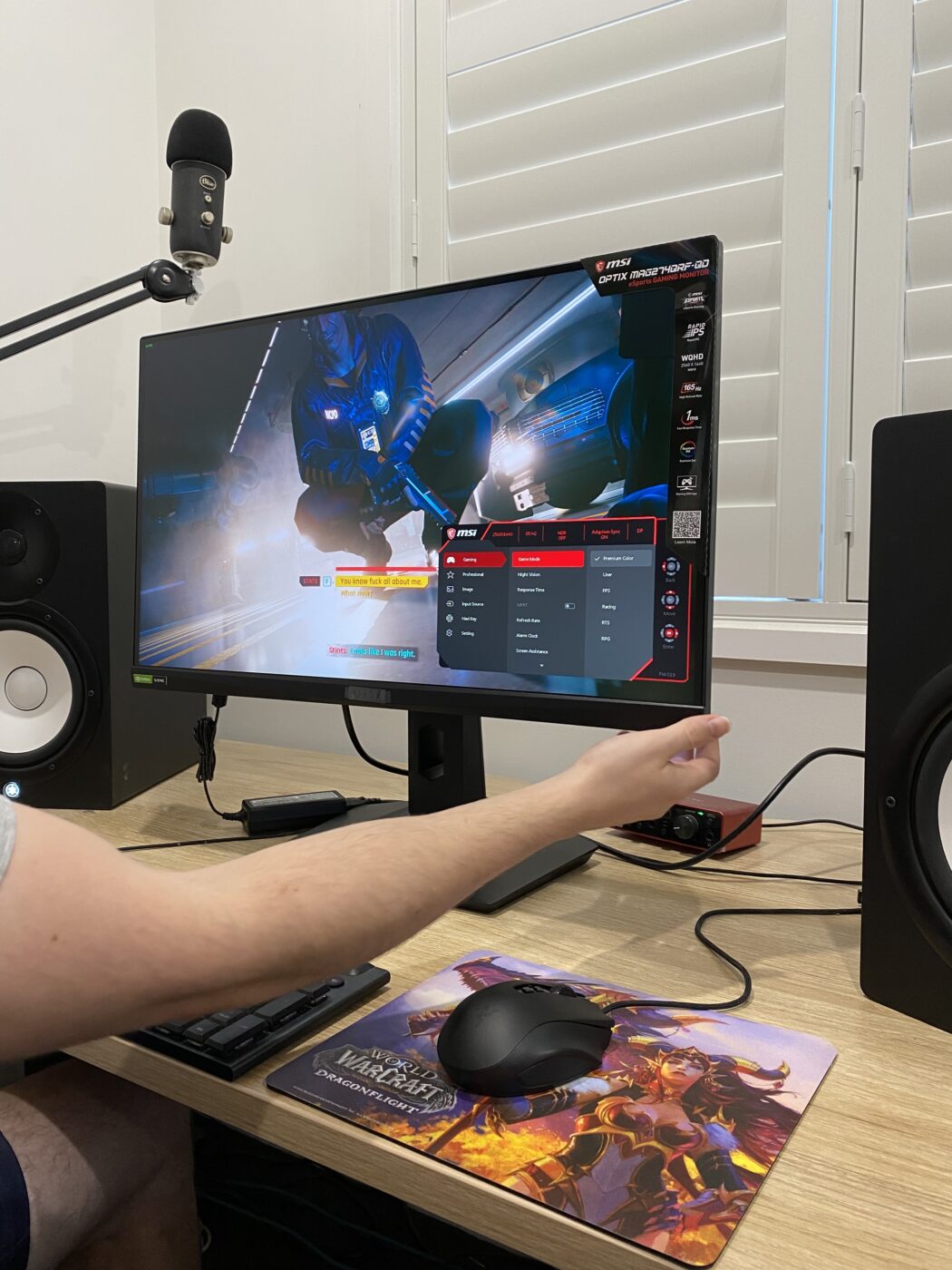
My only criticism was that both monitors looked slightly over-saturated out of the box. This could be attributed to their IPS displays, which boast vibrant colors. Thankfully, this issue was easily solvable with a few tweaks in the calibration settings. That being said, MSI noticed this issue and updated the FW for new profiles (sRGB/DCI-P3/Adobe RGB), so this shouldn’t be an issue for new purchases.
FPS Game Advantages
Playing Call of Duty on both monitors was an entirely different experience than I had been used to with my 24″ Samsung screen. Not only did the high refresh rate on the Optix MAG274QRF-QD and the MAG321QR-QD make tracking targets much smoother, but it also allowed me to spot enemies off in the distance much easier.
The higher resolution of both monitors also made a huge difference. Objects and characters were more clearly defined. I could pick out details I hadn’t noticed before – like insignias on an enemy’s uniform or the reflection of light from a window in a distant building. This improved clarity made distinguishing between friendlies and enemies in a dense battle setting easier, which gave me an edge in competitive play.
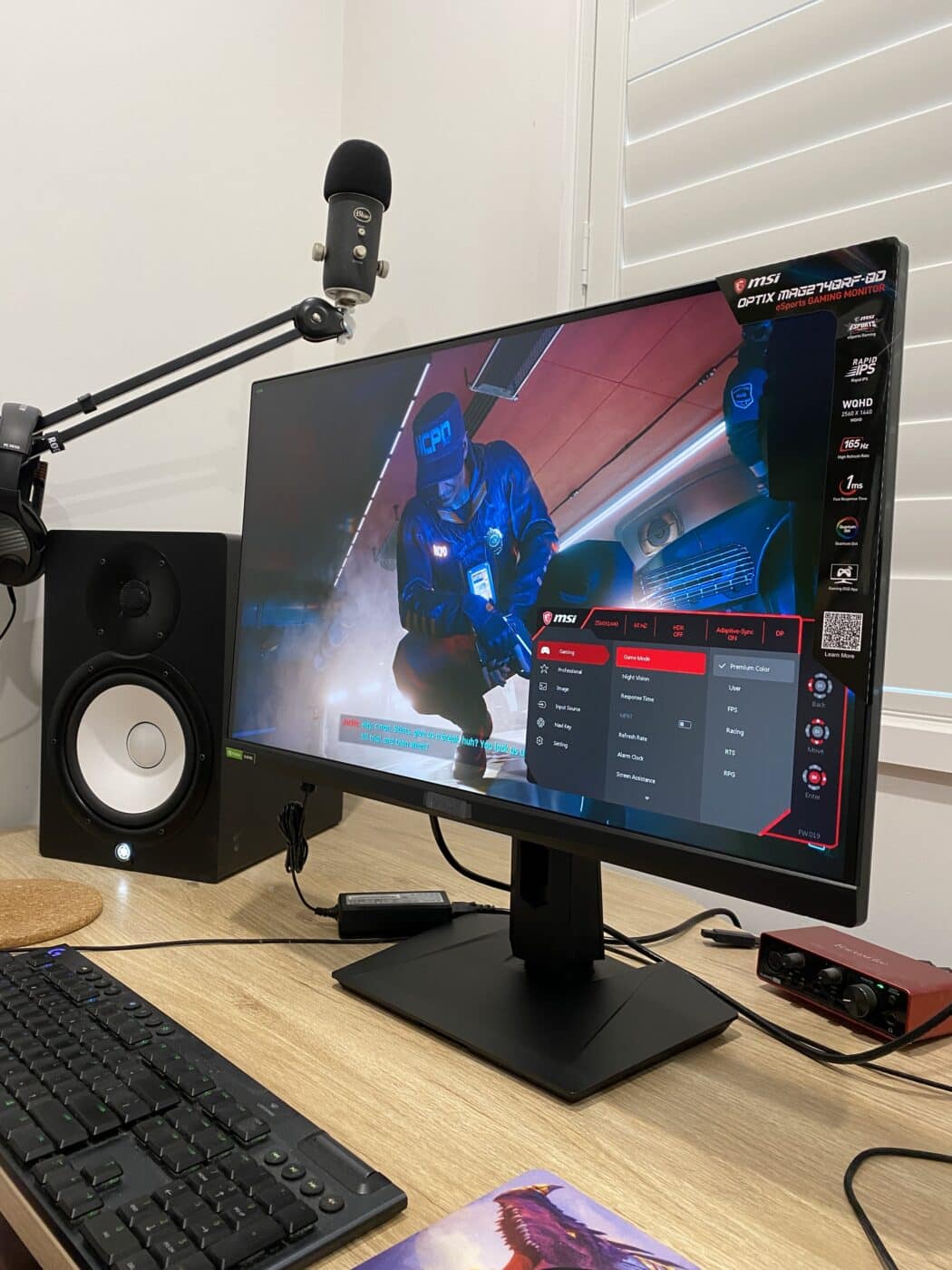
I also noticed that due to the higher resolution, I could make out finer details, such as graffiti on walls or intricate designs on buildings, that may have gone unnoticed on lower-resolution displays. The larger size of both monitors also meant I could see more map elements simultaneously, allowing for better strategic positioning and faster reactions when enemies appeared.
These days FPS isn’t just about online play, so I decided to boot up Cyberpunk and play through the early levels. Both MSI monitors enhanced the immersive visuals and detail of the game. The extra screen real estate allowed me to take in more of the scenery and appreciate the vibrant colors and textures that make up the world. I also noticed many more flaws in the game, such as duplicate character models and other graphical glitches.
Overall Thoughts:
While I wouldn’t consider myself an excellent fps gamer, MSI’s MAG series of monitors helped immensely. Leading into the testing, I didn’t think a new screen would make a huge difference, but I was proven wrong! The most noticeable difference was the ability to spot enemies at range, which I could see as advantageous in games with large, open maps. The smooth and responsive gameplay greatly helped my aim, which is all down to the MAG.
Both monitors offer several advantages that make them great for FPS streaming. They feature fast response times, high refresh rates, and accurate color imagery, enabling streamers to produce visually stunning content.
Additionally, the monitors’ wide viewing angles and gaming-specific features, like the Gaming OSD and NVIDIA G-Sync Compatibility, help streamers to optimize their viewing settings and work more efficiently. Ergonomics features like an adjustable stand, anti-flicker, and less blue light technology also help streamers work longer without eye strain or fatigue.
Discover Streaming Guide for Your Needs.


Chris
Chris is a digital marketer with a strong background in small business and influencer branding. He applies his knowledge of content and promotional strategies to design actionable advice for new and intermediate streamers. When he’s not busy crunching analytics, he can be found in the salt pits of League of Legends.

